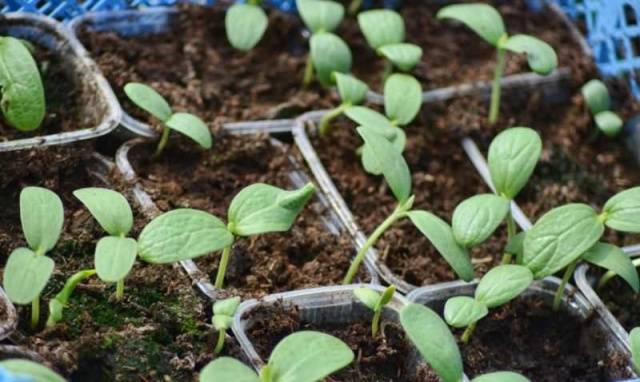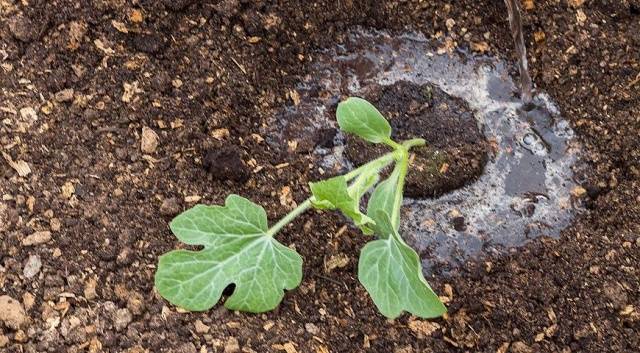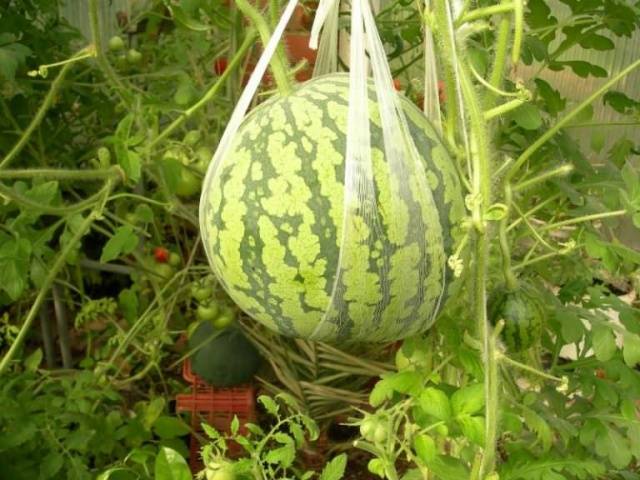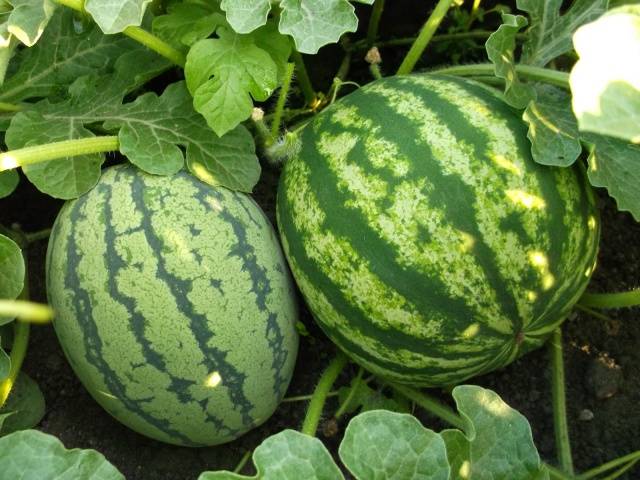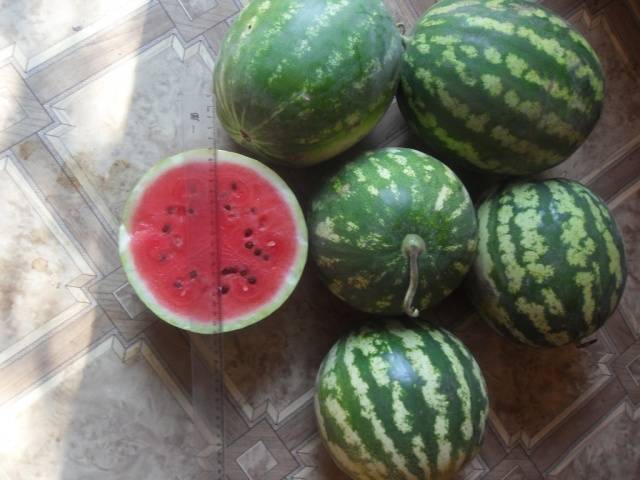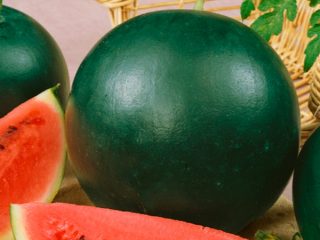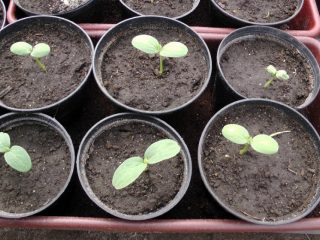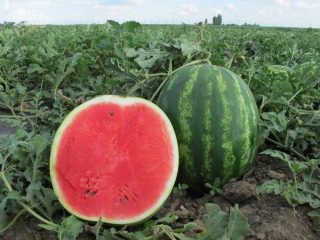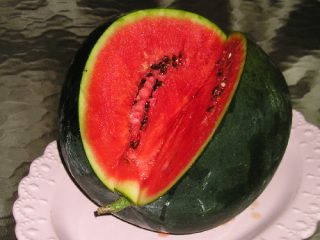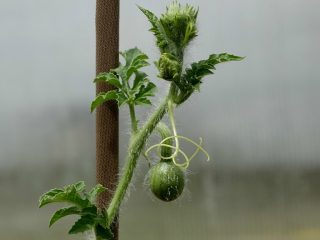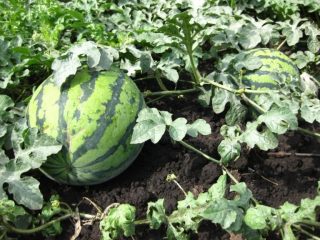Content
Watermelon Chill is recommended for cultivation in the North Caucasian and Lower Volga regions. The variety has a table purpose, suitable for commercial production. Fruits of the Kholodok variety ripen in the mid-late period, are distinguished by a sweet taste and high yield.
Characteristics of the variety
Description of watermelon Chill:
- mid-late ripening;
- 85-97 days pass from emergence to harvesting;
- powerful plant;
- a large number of lashes;
- the main lash reaches a length of 5 m;
- large green leaves;
- the leaf plate is wide, dissected.
Characteristics of the fruits of the Kholodok variety:
- spherical elongated shape;
- average weight 6-10 kg;
- poorly segmented fruits;
- medium-sized black-green stripes;
- the pulp is bright red;
- dense rind;
- sweet taste;
- shelf life - up to 5 months.
Seeds of the watermelon variety Chill are large, 15 mm long. The color is light brown, the surface is rough. The planting material of the companies Aelita, Sedek, Altai Seeds, Russian Ogorod, Gavrish is on sale.
Planting seeds
Watermelon Chill is grown through seedlings or seeds are planted directly on an open area. The works are carried out in April-May. Landing is carried out in prepared soil. Seedlings provide a certain microclimate.
Work order
The seedling method is practiced in regions with short summers. In an open area, seeds are planted only after warming up the soil and air.
At home, watermelon seeds are processed to accelerate the emergence of sprouts. A few days before planting, the seeds are kept in warm water for an hour. Then the planting material is placed in moistened sand.
Seed germination occurs at temperatures above 25 ° C. When small sprouts appear, the seeds are planted in separate containers of 2 pcs. To grow watermelon Chill, containers with a volume of 0.3 liters are required. Their use will avoid picking seedlings.
For 1 kg of soil mixture add 20 g of superphosphate, 10 g of potassium sulfate and urea. The seeds are placed on the surface of the substrate and sprinkled with sand. The containers are covered with plastic wrap and kept in a warm place at a temperature of 30 ° C.
A week later, when the sprouts appear on the surface, the film is removed. The room temperature is lowered to 18 ° C.
Seedling care
The development of watermelon seedlings Chill requires the fulfillment of a number of conditions:
- regular watering;
- lighting for 12 hours;
- top dressing.
Seedlings are watered with warm, settled water. When watering, moisture should not come into contact with the leaves and stems of plants. If necessary, lighting devices are mounted above the plantings: fluorescent or phytolamps.
When 3 leaves appear, the plants are fed with slurry or a solution of complex fertilizer. Before planting on the garden bed, the seedlings are hardened in the fresh air. They are left on the balcony, first for 2 hours, then the period of their stay in natural conditions is increased.
Landing in the ground
Watermelons with 5-6 leaves are transferred to an open area. For growing crops, choose a site that is well warmed by the sun. Landings provide protection from the wind. The optimal location is the southern or southeastern side of the site.
Before planting the Kholodok variety, it is recommended to grow winter wheat, onions, cabbage, legumes in the garden.Plants are not planted after tomatoes, peppers, potatoes, eggplants, melons, zucchini.
Photo of a watermelon Chill after disembarking in an open area:
Watermelon prefers sandy or sandy soil. They begin to prepare the site in the fall, when they dig up the ground. Additionally for 1 sq. m of soil, 4 kg of compost and 100 g of complex fertilizer containing nitrogen, potassium and phosphorus are applied.
The structure of heavy soil is improved with river sand in the amount of 1 bucket. Fresh manure is not used to fertilize the soil.
The procedure for planting watermelons of the Cholodok variety in the ground:
- In the garden, holes are made in increments of 100 cm.A 140 cm is left between the rows.
- Each planting hole is watered abundantly with water.
- Seedlings are removed from containers and transferred to the wells.
- Plants are deepened into the ground to cotyledon leaves.
- The soil is compacted, a small layer of sand is poured on top.
- Seedlings are watered abundantly with warm water.
At first, watermelons are covered from the sun's rays with paper. It is harvested after a couple of days, when the plants recover from transplantation.
In regions with a cool climate, the Cholodok variety is grown in greenhouses. Landing is carried out in a similar manner. A gap of 70 cm is made between the plants. Plants can be planted under the shelter earlier if the soil has warmed up enough after winter.
Variety care
The Chill variety needs constant care. Watermelons are watered and fed. To protect against diseases and pests, plants are treated with special preparations.
Removing excess shoots allows you to get a high yield of watermelons. Up to 4 fruits are left for each plant.
In the greenhouse, the plants are provided with fresh air. The culture does not tolerate high humidity. Indoors, plants are tied to a trellis, the fruits are placed in nets or on stands.
Watering
Watermelons Chill are watered every week. The plant requires abundant moisture. For 1 sq. m with landings, you need 3 buckets of warm, settled water.
Photo of a watermelon Chill in the greenhouse:
After watering, the soil is loosened in the beds and weeds... When the watermelons grow, it is allowed not to loosen. Gardening tools can damage plants.
Top dressing
Chill watermelons are fed twice a season:
- 14 days after transplanting into the ground;
- when forming buds.
For the first feeding of watermelons, a fertilizer containing nitrogen is prepared. From natural remedies, a solution of chicken manure or mullein is used in a ratio of 1:15. The agent is applied under the root of the plants.
Another way to feed plants is ammonium nitrate solution. For a large bucket of water, 20 g of this substance is enough. In the future, it is better to abandon nitrogen fertilizers, which help to build up green mass.
For the second treatment, a complex fertilizer is used. Each plant requires 5 g of superphosphate and potassium salt. Substances are introduced into the soil or dissolved in water before watering.
Diseases and pests
When using high-quality planting material, plants rarely get sick. According to the description, Chill watermelon is characterized by medium resistance to fusarium, anthracnose and powdery mildew. With the observance of agricultural technology, the risk of developing diseases is minimized.
Most diseases are caused by a fungus. Its spread leads to the appearance of brown or white spots on the leaves. As a result, the taste of the fruits deteriorates, which rot and deform.
In greenhouses and hotbeds, watermelons are susceptible to attack by spider mites and melon aphids. Insects feed on plant sap, as a result of which the leaves dry out.
For pest control, infusions based on potato tops, dope, chamomile are used. To scare off aphids, watermelons are powdered with tobacco dust and wood ash. Chemicals are used before flowering.
Gardeners reviews
Conclusion
Watermelon is a thermophilic crop grown in various regions. In cold climates, watermelons are planted indoors. The most reliable way of growing is through seedlings. At home, they stimulate the germination of seeds, which are planted in light soil.
The Kholodok variety is valued for its sweet taste, good transportability and keeping quality. Plants are looked after by watering and feeding.
